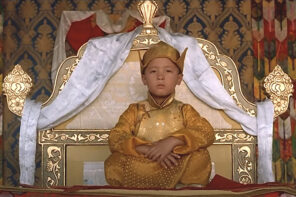There are a bunch of Buddhist monks killing Muslims in Myanmar and no one seems to care.
Prompted by the alleged rape of a Buddhist woman by three Muslim men in June, violent clashes between the two groups keep popping up in western Myanmar. This sort of ethnic repression is not new; the Burmese have long viewed the Rohingya (members of the local Muslim community) as illegal immigrants, despite the fact that many belong to families that have resided in Myanmar for generations. Timothy McLaughlin of the Myanmar Times, notes that “the entire conflict has really put a spotlight on hatred and distrust that people have of Muslims in Myanmar.”
These so-called “skirmishes” actually represent some of the worst violence reported in the area—arson and murder committed by local Buddhist monks.
While the lack of reporting and imagery on this violence might have to do with Myanmar’s suppressive military rule and seemingly endless civil war, which just ended last year, it might have to do with the fact that no one wants to see a Buddhist committing a crime.
Buddhists are peaceful, warm, accepting, cross-legged men wearing funny, exotic robes. Buddhists meditate. They are hermetic. They practice yoga—the kind without spandex. Their Western-identified religious leader has been described as a teddy bear. Our culture clings to this transnational re-appropriation of the Asian religion, soaking up the Buddhist sunshine. Even the New York Times article, reporting on the recent conflict, depicts a group of monks praying together, under the headline that uses “clash” and “crisis,” in contrast with a recent Newsweek cover, “Muslim Rage,” which opted for slightly more aggressive imagery to illustrate religious-inspired violence.
It seems all too easy to blame the media, but truly, that’s how we got in this dichotomous mess in the first place. As Thomas Tweed explains in “Why are Buddhists so nice?”, this misrepresentation began in the late 1950s, with national print and television news depicting Buddhists as “the solitary meditator, eyes half closed, sitting in the lotus position.” Literary staples such as The Dharma Bums and Zen and the Art of Motorcycle Maintenance helped perpetuate its reputation as an individual, peaceful practice. However, only a few elite in the monastic community regularly engage in meditative practices, and apparently Buddhists are as prone to prejudice and violence as any of us.
Highly respected by the both the government and the people, Burmese Buddhist monks exert a sizable influence throughout the country, McLaughlin explains. This is the realistic image our Western culture needs to add to its vision of the cross-legged men in the funny robes: the powerful and political Buddhist monk.




